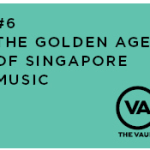1964 was a significant milestone in Singapore’s history, a period of tension amidst the uncertainty and hope of forging a new identity.
Various views about the Merger:
A recording of Prime Minister Lee Kuan Yew’s address, in Mandarin and English, on the Agreement to set up Malaysia by 31 August 1963 signed in London. The recording was done a day after PM Lee Kuan Yew signed the Agreement. Listen to the audio recording.
New Year Message by Prime Minister Lee Kuan Yew (1 Jan 1964). View
“1963 will probably go down in history as the most eventful year in our lives. Had Malaysia been formed in 1957 at the time when the Federation was proclaimed independent, our emergence as a nation would have been welcomed by the whole world, including our immediate neighbours. But seven years later, the mood had changed, and Malaysia’s neighbours grudged her the territorial integration and economic success they desired for themselves. So from a “confrontation” of propaganda and villification commenced at the beginning of the old year, they ended up with an economic boycott and military pressure by the beginning of the new year.
“…let us resolve to make 1964 a year of consolidation. If we are realistic and practical, we can hold our ground internationally and thoroughly expose the hollowness of the neo-colonialist line. If we the States within Malaysia are united and prepared to help each other, we adjust our economy and make good any losses. If at the end of 1964 we are stronger internationally and internally than at the beginning, the prospects for a permanent settlement will be bright.”
An interview with Dr. Lim Hock Siew, politician. View
“…our main objective of anti-colonial struggle in Singapore at that time was to reunite Singapore with mainland Malaya. To bring the people of Singapore back to the Pan Malayan political struggle, for a united socialist Malaya. That was our main objective and we resisted all temptations to deviate from this objective, we resisted all temptations to play political optimism in calling for independence to Singapore, to pretend to be more anti-colonial than the PAP and so on. Because we felt that the long term aims, the long term objectives of our anti-colonial struggle could only be achieved with Singapore being genuinely merged with the Malayan nation. And that the struggle of the people of Singapore is part and parcel of the struggle of the whole Malayan nation.”
An interview with David Marshall, politician. View
“[The merger] was premature. That’s the danger. It has set it back. I said we should go our separate ways and build bridges until there had grown up sufficient feelings of mutual respect for a real marriage to take place instead of a shot-gun marriage to protect the PAP. But it might have been valuable from the point of view that it preserved the PAP Government.”
An interview with Mr. Pathmananban Selvadurai, former PAP MP for Bukit Panjang. View
“I was not confident in the kind of – our politics could match with the Malaysian style of politics. Their politics was frankly communal and racists and it is Malay dominated and which is something that I do not accept at all. Whereas in Singapore – was under the British – it was entirely different. Singapore was a community apart, compared to what Malaya was at that time. Everytime – quite apart from politics – during school holidays when I used to go to Malaya – you could see the atmosphere was so very different. It was very Malay; it was not cosmopolitan like Singapore was. There was greater interaction between various communities in Singapore than in Malaysia – Malaya at that time and when that was expressed in political terms and it was all Malay, Malay, Malay and nothing else and their nationalism was defined in Malay terms and the Chinese were more interested in making money, they were not looking at it in political terms – the thinking was not done politically.”
Photograph of the Merger. The poster at City Hall during the Malaysia Day celebrations in Singapore, with the words “Majulah Singapura” (Onward Singapore). The formation of Malaysia was officially proclaimed on 16 September 1963. View
Tension from outside Singapore: THE KONFRONTASI
In 1964, Singapore was in the midst of the Konfrontasi, a hostile Indonesian response to the formation of the Federation of Malaysia marked by intermittent armed attacks and bombings, including the 1965 Macdonald House bomb explosion which killed 3 and injured 33. Read more about the Konfrontasi.
Sinnathamby Rajaratnam speaking to journalists on Feb. 20, 1964. View
“Today, some 15 years after the Indonesian revolution it is quite clear that Indonesia far from becoming the Big Brother of South East Asia is becoming the Big Bully of this region…”
“When Dr. Subandrio and his colleagues bitterly complain that we do not seek Indonesia’s advice; that we do not look to Bung Karno for inspiration and leadership it is not because we do not want to. As a small country we are fully conscious that we cannot stand alone in this modern world. We need friends, we need protectors and we need help and guidance.”
At least 10 bombs exploded in Singapore (April 17, 1964). View
“Another Indonesian bomb – 10th since the beginning of this year – blasted a telephone booth to smithereens and damaged several houses tonight at Kampong Melayu, off Jalan Eunos.”
Tension from within: RACIAL RIOTS IN 1964
Appeal for calm. (The Straits Times, 22 July 1964). View
“A provision shop near Lorong 3, Geylang, was burnt and an attap hut in Lorong Turi, in the Jalan Eunos area, was on fire.’
“At 6.45 p.m., Straits Times reporter Sia Cheong Yew, in a car moving along North Bridge Road, saw at the junction of Arab Street two large groups of people.”
“One man was seen grabbing a big kanda stick and chasing another.”
“At this point dustbins flew into the air from both sides of the road and all traffic came to a standstill.”
“Further down the road, smaller groups of men armed with sticks and chairs were assembled along five-foot paths.”
A broadcasted speech by Prime Minister Lee Kuan Yew (21 July 1964). View
“…We can and we will sort these things out later on. But right now our business is to stop this stupidity. The vast majority of our people want to live in peace with each other…”
“Regrettably, there have been a few deaths both among Chinese and Malays and a few persons injured. Some lorries, cars and scooters have been burnt. But do not take the law into your own hands and try to mete out justice on your own. That is the business of the government. Do not make things worse by yourself trying to act as policemen. To relieve parents of any anxiety for their children all schools will be closed tomorrow, but business will go on as usual tomorrow. Workers will go to work as usual. You should do your duty by staying at home tonight while the Police and the army will see that all this madness is checked and stopped. What has happened cannot be undone. What will happen depends upon what you and the government do. We shall make it clear that lawlessness does not pay. But more important, harmony between our communities must be preserved. This you can help me do.
Photograph of street after curfew (23 July 1964). View
Photograph of roadblock set up (24 July 24 1964). View
Photograph of burnt taxi from riots (25 July 25, 1964). View
Documentary Clip from CNA on racial riots. View
These documentaries provide a summary of the tense, eventful period in 1960s Singapore:
“Diary of a Nation”, a 1988 Singapore Broadcasting Corporation (SBC) documentary on the merger and separation, including the racial riots. View
“1960s Singapore”, a Channel NewsAsia (CNA) documentary on Singapore’s independence. View
By Daniel Teo
Published on 22 September 2014
The Vault 1.1 – Nineteen Sixty-Four revisits When Smiles Are Done and A White Rose at Midnight, refreshes and retells the stories in them through the eyes of four artist-collaborators on 22 September 2014, 8pm at Centre 42 Black Box. Admission is free.
Find out more here.






